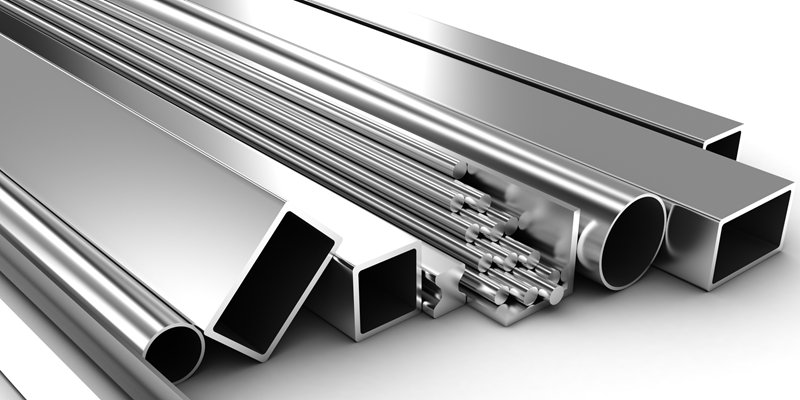- February 24, 2022
Mild steel is the steel that combines iron and carbon. Owing to iron presence it developed good magnetic properties. Mild is not alloy steel. Due to more carbon present its chemical composition is quite different from other elements or other steels as mild steel has a good surface quality and you can increase its surface hardness in different ways. Let’s learn more about this material.
What is mild steel?
Steel is mostly composed of iron. Depending on different amounts of carbon content, there are low-carbon steel (also called mild steel or plain carbon steel), medium-carbon steel, and higher carbon steel.
The following chart shows the differences and characteristics of the three steel types:
Carbon content (wt. %) | Microstructure | Characteristics | Examples | |
Low-carbon steel (Mild steel) |
Less than 0.25 |
Pearlite, ferrite | Soft, cheap, very ductile, easy to machine and weld | AISI105, AISI 316L, Q195, Q215, Q235, 08F, 15Mn, 20Mn |
Medium-carbon steel |
0.25 to 0.60 |
Martensite | Reasonably ductile, hard, strong and not easy to harden | AISI 409, 45#, 40CR, 20CR, SCM 435 |
High-carbon steel (carbon tool steel) |
0.60 to 1.25 |
Pearlite | Very hard, strong, unyielding, hard to machine and weld | T7, T7A, T8Mn, T8MnA, AISI440C |
From the above chart, mild steel is a steel type that contains 0.05%-0.25% carbon. Due to its malleability and ductility, the material is easy to form and machine. Mild steel parts are generally very suitable for stamping, forging. Mild steel is widely used in tools, automotive body parts, construction, and infrastructure.
How is Mild Steel Made?
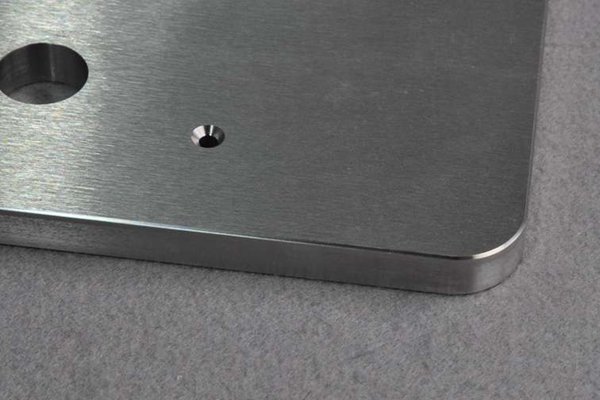
The manufacturing processes of mild steel (low-carbon steels) resemble that of other carbon steels. These processes have been changing over time and are currently are more efficient and cheaper than before. In modern manufacturing processes, three major steps are involved in producing mild steel out of pure iron or iron ore.
1. Primary steelmaking
In this process, iron is mixed with coal and lime and heated in a blast furnace. Modern primary steelmaking uses modern furnaces such as Basic Oxygen Furnace or Electric Arc Furnace. The latter is generally used by manufacturers in developed countries, and steel parts that come out of the Electric Arc Furnace are of high quality.
2. Secondary steelmaking
The purpose of secondary steelmaking is to mainly reduce the carbon (less carbon) contents to the desired extent and add other alloying elements to improve the properties of the steel. This step is mainly controlling and monitoring the heat treatments and cooling of the furnace.
3. Casting and primary forming
As soon as the steel in the furnace reaches the specific carbon content and mechanical properties are enhanced to a certain degree, the steel is to be poured into a mold, which is called casting and some say cast iron which is not right. . During this process, the liquid form of steel will be cured and formed into various geometries. These crystal structures cast steel will subsequently be cut into smaller shapes of parts.
The casted steel has plenty of defects and imperfections. A primary forming process called hot-rolling is applied. After hot-rolling, the steel gains more strength, ductility, weldability, etc.
4. Secondary forming
Generally speaking, there is a secondary forming process such as CNC-machining, cold-rolling, powder-coating, case-hardening, or electroplating to further improve the mechanical and chemical properties or aesthetics of the mild steel parts. At these processes, a metallic coating, such as a zinc coating or any other type of carbon steel, is properly applied.
Mechanical properties of mild steel
As you could judge from the chart above, mild steel has lower carbon content than other carbon steel. The mild steel has a mere carbon content of 0.25%.
Mild steel has great impact strength, great ductility and weldability, good malleability with cold-forming possibilities. With these properties, CNC-machining mild steel is easier than CNC-machining other types of steel.
The major disadvantage of mild steel is that it has a relatively low tensile strength, which means it’ll break more easily than other types of steel.
Fortunately, a heat-treatment process called carburizing can be used to improve tensile strength. Carburizing is a surface-hardening process that heats the mild steel to a certain temperature then cools down the steel, which makes the steel hardened on the surface when keeping the core of the steel soft and ductile.
Applications of mild steel
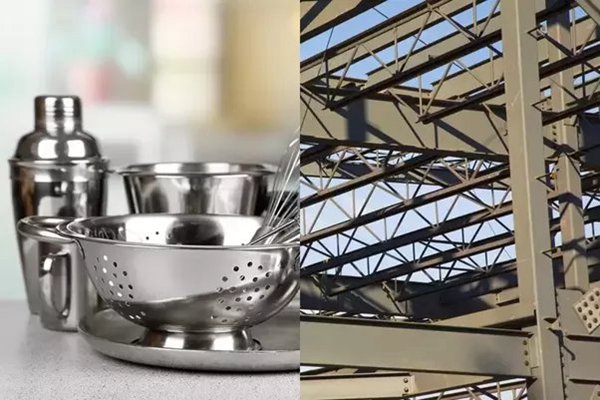
Mild steel is widely used. Typical applications include common hardware tools, cookware, medical instruments, machinery, construction, infrastructure, and so on.
1. Construction and infrastructure
Mild steel has good tensile strength for building frames in construction projects. It meets seismic and wind requirements, cannot be compromised by worms and insects, and mild steel is erosion-resistant and fire-retardant, perfect to use in construction.
2. Machinery
The high strength, ductility, and hardness of mild steel make it favored for machine accessory manufacturing. Due to the low content of carbon, the steel can be machined, cut, pressed, molded, and formed without breaking.
3. Cookware
Due to its very little carbon content, the mild steel doesn’t not rust, which makes cookware stay clean and sharp for a long time. Mild steel is more heat-resistant than other materials, can be used as a non-stick material, and is more healthy than aluminum cookware.
4. Pipelines
Because mild steel is extremely ductile, pipes that are made of mild steel are very popular when people make various kinds of pipes and poles. Mild steel could be used as food-safe materials, so it is ideal to transport water, beverage, and natural gas in steel pipes. Also due to its low-carbon containment, pipes that are used outdoors don’t rust and cold weather through the harsh environment. Compared with plastic pipes, mild steel pipes are more environment-friendly and last a lot longer. It also can be cut in a rectangular shape as well.
Mild steel use cases
AISI 316L, which has a low carbon content of only 0.03%, is typically mild steel that is very commonly used. During dealing with various companies over the years, we have found that medical instruments companies love using the material. To make prototypes or customize low-volume steel parts, CNC-machining is the generally number one choice. CNC-machined 316L steel parts often need no surface treatment or any heat-treatment process. CNC mild steel parts can be used as final products, not only prototypes. Other common products such as fishing tools also use a lot of AISI 316L.
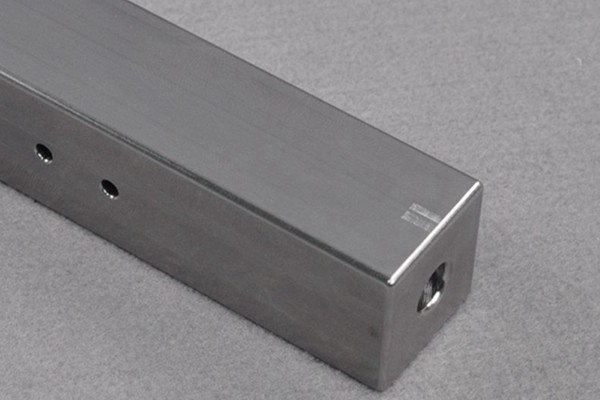
Mild steel CNC machining and short-run production
Why do people often complain that steel is hard to be CNC-machined? The machinability of steel mostly depends on its carbon content. High-carbon steels are difficult to machine mostly because of their unyielding characteristics plus internal stress.
However mild steels are also difficult to machine because they are too soft. The chips that appeared during the CNC-machining process tend to stick and accumulate, this leads to more time for cleaning the chips and possibly damaging the cutting tools. The ideal amount of carbon content for easy machining is around 0.20%.
For instance, some mild steel is too soft and it causes chip-accumulation problems. There is one way we sometimes use: case hardening the soft steel first. Case hardening or surface-hardening makes the mild steel hardened on the outside which keep the steel soft on the inside, which makes the chip-accumulation problems go away, and because the core of the steel is still soft, when the external stress is produced during the machining process being applied on the material, the softness or ductility of the mild still will absorb the stress and make the part unable to break.
For the short-run production of mild steel parts, CNC machining is the way to go. The mild steel material used for CNC-machining is what we called” block material”, which has good quality and reasonably cheap price. CNC machining is very fast, compared to casting and molding. For casting and molding, the initial time and cost invested in making molds are of large amount. With short-run production or low-volume production of mild steel parts, the total cost is generally much cheaper than casting and molding, because you don’t have to make molds.
Mild steel long-run production: Casting and Molding
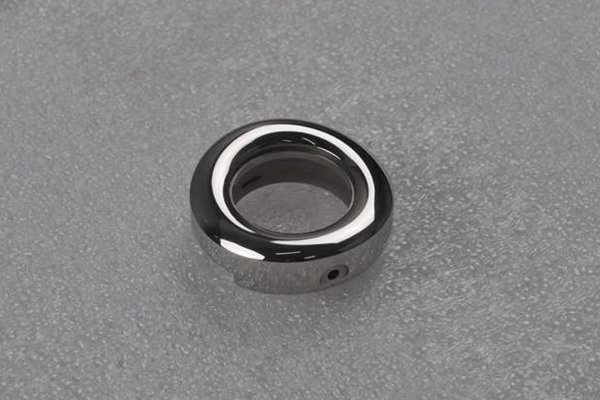
If large volumes of mild steel parts are to be produced, the common method is called casting or molding (molten steel). Metal injection molding (MIM), which is similar to plastic injection molding, is the process of injecting a liquid form of metal into a mold, the liquid metal will be cured and solidified in the mold. After being ejected from the mold, steel parts are roughly formed. There are post-finishing processes to further improve the aesthetics of molded parts.
Like plastic injection molding, when designing the MMI molds and parts, a designer has to consider issues such as draft angles, de-molding, shrinkage, tolerances, etc.
Conclusion
Mild steel or low-carbon steel has a carbon content that’s less than 0.25. Due to its properties, mild steel is widely used in almost every industry. The common method to make mild steel prototypes or low-volume production-grade parts is by CNC machining. For larger volumes, metal injection molding is a more feasible way.
WayKen as a professional prototype and low-volume production service provider have many years of experience and expertise to machine different types of carbon steel, scrap steel, stainless steel, alloy steel and the same manner, etc. If you have a project related to the processing of mild steel, please get a quote.

